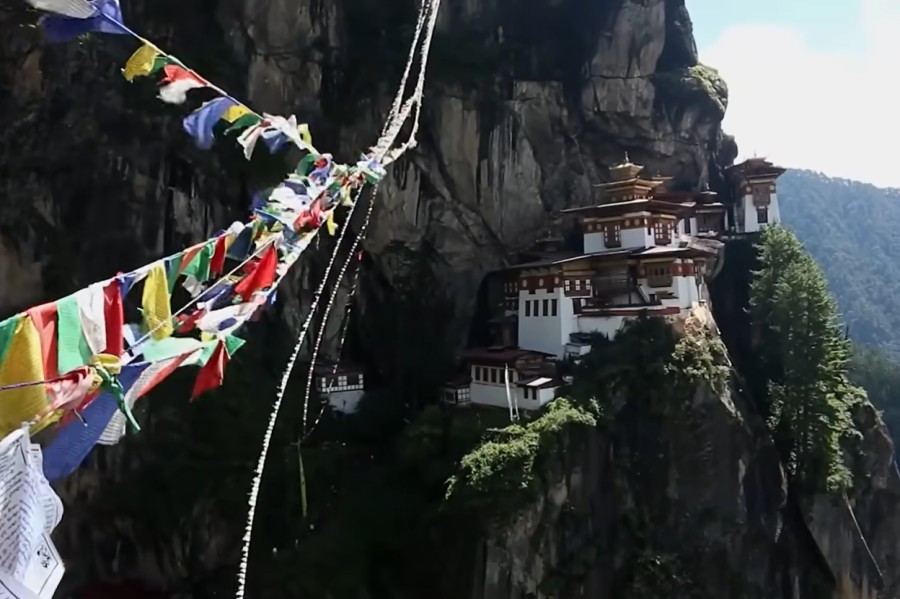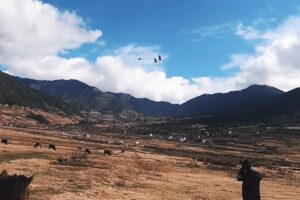
Himalayan Country Bhutan Travel
Bhutan is the only one country which is carbon negative country in the hole world. The best & Perfect time to visit Bhutan is from September to December Month. The population of Bhutan is only 7 million in the whole country. People in every city should know everyone. The traditional dress here is called Gho and they wear this dress all the time.
some important places to visit in Bhutan:
Bhutan, a beautiful Himalayan country, is known for its natural beauty, religious heritage and cultural diversity. Following is the list of some important places to visit in Bhutan:
1. Paro: Paro is located on the Paro (Taringa) coast of Bhutan. There are many places to visit here including Paro Ubha, Paro Takchu, Dakmatang Jatra Punthang as well as Punakha Dong Mahasthan.
2. Punakha: Punakha is the capital of Bhutan and is known for a beautiful Moti temple, Punakha Jung Mahasthan and other heritage sites.
3. Thimphu: Thimphu is the main city of Bhutan and has many places of cultural interest, such as Buddhist temples, Tshicho Dong and Thimphu Dong Mahasthan.
4. Paro Takht Mahasthan: Paro Takht is an important part of the ancient religious and cultural site of Bhutan. There are Paro Takht temples and other religious buildings.
5. Haspa: Haspa is one of the unique tourist attractions in Bhutan. It is rich in Buddhist temples, ancient water mills infused with honey and ideal natural beauty.
6. Ganga: Ganga is known for high water springs and Buddhist temples. It is with beautiful natural beauty Contributes and contributes to the religious and cultural identity of Bhutan.
7. Chela Pass: It is a natural exotic and beauty place of Bhutan, where you can enjoy the natural beauty of Bhutan with scenic views and resort benefits.
This list is only a small part of some of the places to visit in Bhutan. There are many other interesting places in Bhutan that offer endless beauty and traditions to depict the visitors on a daily basis.

📍Phobjikha Valley, Bhutan
Phobjikha Valley or Gangte Valley is located 135 km from Thimpu in Bhutan at an altitude of 3000 meters which is 80 km north of Punakha. The U-shaped Phobjika Valley is actually a protected wetland and a Ramsar site spanning a vast area of the Ganges region of central Bhutan.
Phobjika Valley, just below Gangte Gumpha, is the winter home of the rare species of bird, the Black Necked Crane. Many birds come here every year because of the small bamboo grass in the valley. Bhutanese consider this bird sacred and a symbol of good fortune. For many years there was no electricity service in the area just keeping the birds in mind.
There is a crane center in the valley itself from where the whole valley is monitored and the birds are taken care of. It is said that when these birds come to the valley from far Tibet at the end of October, they circumambulate the Gangte Gumpha three times before entering the valley, and return in February in the same way.
Although potatoes are mainly cultivated in the valley, other species of mullo and wolkapi are also cultivated in large quantities as winter fodder for cattle. From the valley a narrow road lined with pine, maple, rhododendron trees leads through the forest towards Gangte Gumpha. A wonderful view of the valley from the top, which may be impossible to describe in words.
Gangte Gumpha is an important school among the ancient schools of Buddhism. Every year on November 12, the Black Necked Crane Festival is organized in Gumpha Chatal, which attracts many people from all over the country. It is much colder than Thimpur. A must visit here to get a taste of rural life in Bhutan.
Way to go
80 km north of Punakha awaits you in the heavenly scenery of Phobjica Valley, lined with pines, maples and weeping willows. Drive along the paved road from Punakha to Wangdu to Bumthang for about three hours, then climb the hill on the right and descend after a twenty minute drive to soft grass covered marshland. A thick golden peace descends silently through the sky in this Phobjika Valley, the winter pasture of Tibetan black-necked cranes.
Where will you stay
Accommodation in Phobjica Valley is mostly farmstays and all have hot stone baths.
Important information
To go to Punakha, Ha Valley, Phobjika, a permit is required from Thimpu. The permit office opens around 10 am, and if you apply early in the morning, you will get the permit by noon. If you want to visit Pinakha from Thimphu, the bus service is good and the fare is also low. But yes, it is better to hire a separate car if you are going to Paro via Fobzika.
📍Wangdi Phodrang, Bhutan
70 km from Thimphu and 18 km from Punakha is the little-known enchanting hill town of Wangdue Phodrang. At about 1300 meters altitude, the Wangditang Chu River lies in the chest of the valley. Step by step you will see jum farming. At the top of the hill you will see Wangdi Phodrong Dzong. From a distance, the Dzong seems to hang over the river.
The Jung was built in 1638 by King Habdrung Gawang Namgyal who was very popular and his mummy is still preserved in Punakha Jung. Show your permit at the entrance to the beautiful bridge over the Wangditang Chu River. As soon as you cross the bridge and enter the village, you will see the path of Wangdi Phodrang. Several shops selling stone and bamboo products can be seen here. Roads have been built on both sides of the river.
If you want to enter Wangdi Phodrang’s Jung, you have to show the permit and you have to manage this permit from Thimphu. From the rooftop of this jhang you get a great view of the entire road and the river which is not to be missed. Surrounded by rivers, streams and green mountains, Wangdi Phodrang is simply beautiful. Wangdi Phodrang, an ancient city on a mountain ridge along the river, is known as Wangdi to the local people.
The distance from Wangdue Phodrang to Trongsa is approximately 130 km. Pelela Pass, the second highest road in Bhutan, has to be crossed on this route. Trongsa is of considerable importance for historical reasons. The country’s first and second kings ruled the country from Trongsa Dzong, built in 1648. The Dzong was built on a small hill and steps led down quite a bit. Due to its location, it is visible from all parts of the city.
How to go
Due to its proximity from Punakha, you can go directly to Wangdi Phodrong by taxi. If you want you can take a taxi from Thimpu or you can go around by taxi during your visit to Punakha.
Checkout this article: Sri Lanka’s heritage of Kandy and Colombo!

2 thoughts on “Himalayan country Bhutan travel and sightseeing!”